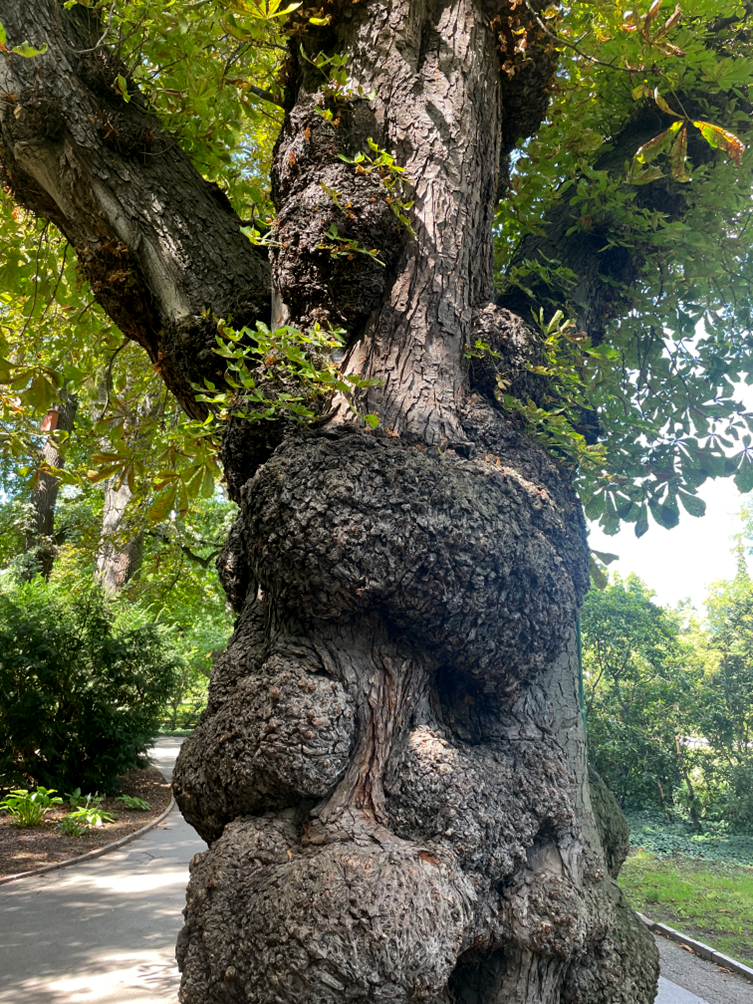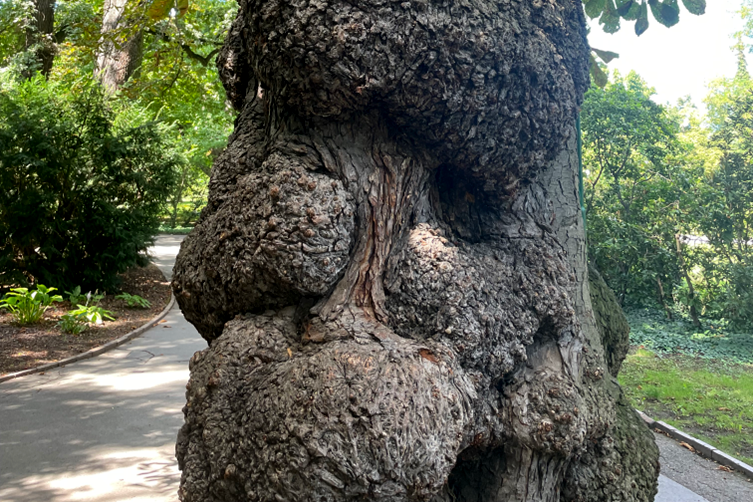This strikingly bulbous deciduous tree, found in Prague, originates from the Balkans, and has been cultivated in Western Europe since 1576. The plaque below reads: ‘The tree in front of you is not ailing. The lumps on its trunk are calluses which the tree readily produces to protect itself from any infection via the wounds left at the annual pruning of unwanted shoots.’
I love the fact that the tree’s calluses are protection and the healing from wounds. The word ‘trauma’ comes from the Greek for physical wounds or lacerations; only in the 19th century was the term applied to our psychological wounds, which of course can be hidden in our bodies and minds, out of sight and even out of our awareness.
I recently listened to “The Power of Guilt”, a Radio 4 series that explores the impact of a climbing accident on two individuals, producer Dave Anderson and his partner Cassie, four years after a climbing accident that severely injured Cassie. The series delves into the colossal nature of their experience and the lasting guilt that followed in its wake. What is so compelling is the in-depth exploration of the impact from a number of different perspectives, including the theological, spiritual and psychological.
Recovery from overwhelming or huge experiences that change us on the inside is not linear. As was the case for Dave, the process involved much searching, struggle, exploration, making connections, discarding things that did not help, until there was space to accommodate the experience inside him.
Listening to his story reminded me of these words from the final chapter of my book 20 Ways to Break Free from Trauma:
‘Trauma is powerful. It changes us but it can also bring strength – strength that is forged through trusting that our broken threads can be re-connected even as we struggle in the dark. In doing so, without realising it, we are going further, we are erecting a scaffolding of gold that fuses around our wounds, building our resilience.’
In the same way, the tree has erected a kind of scaffolding of gold in its calluses, expanding where it needs to in order to remain itself and maintain its integrity and health. In doing so it takes on a beauty of its own.
Dave speaks about the need to befriend his inner guilt, to make space for it, drawing on the metaphor of the multi-faceted crow in Max Porter’s 2016 book Grief is the Thing with Feathers. For Dave, this process of accommodation and recovery takes time, can sometimes appear circular and has twists and turns. Yet, some years later, when he is able to integrate his guilt, it no longer consumes but becomes a part of him. The experience offers Dave a new-found humility and he is able to find a way to continue happily in his life with Cassie.
Like the tree, we have such capacity to learn, grow and heal, but we need to be given space to find our own ways and time to do so.


